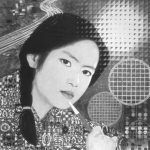The impossibility of gender in narratives of China’s modernity
Recent cultural histories have gone to considerable lengths to define an ‘alternative modernity’ for China, going back to the commercial developments of the late seventeenth and early eighteenth centuries. [1] As delineated via the complex relationship between dominant Western and ‘other’ versions of modernity, its general form has been indicated by, for example, Dorothy Hodgson, […]

